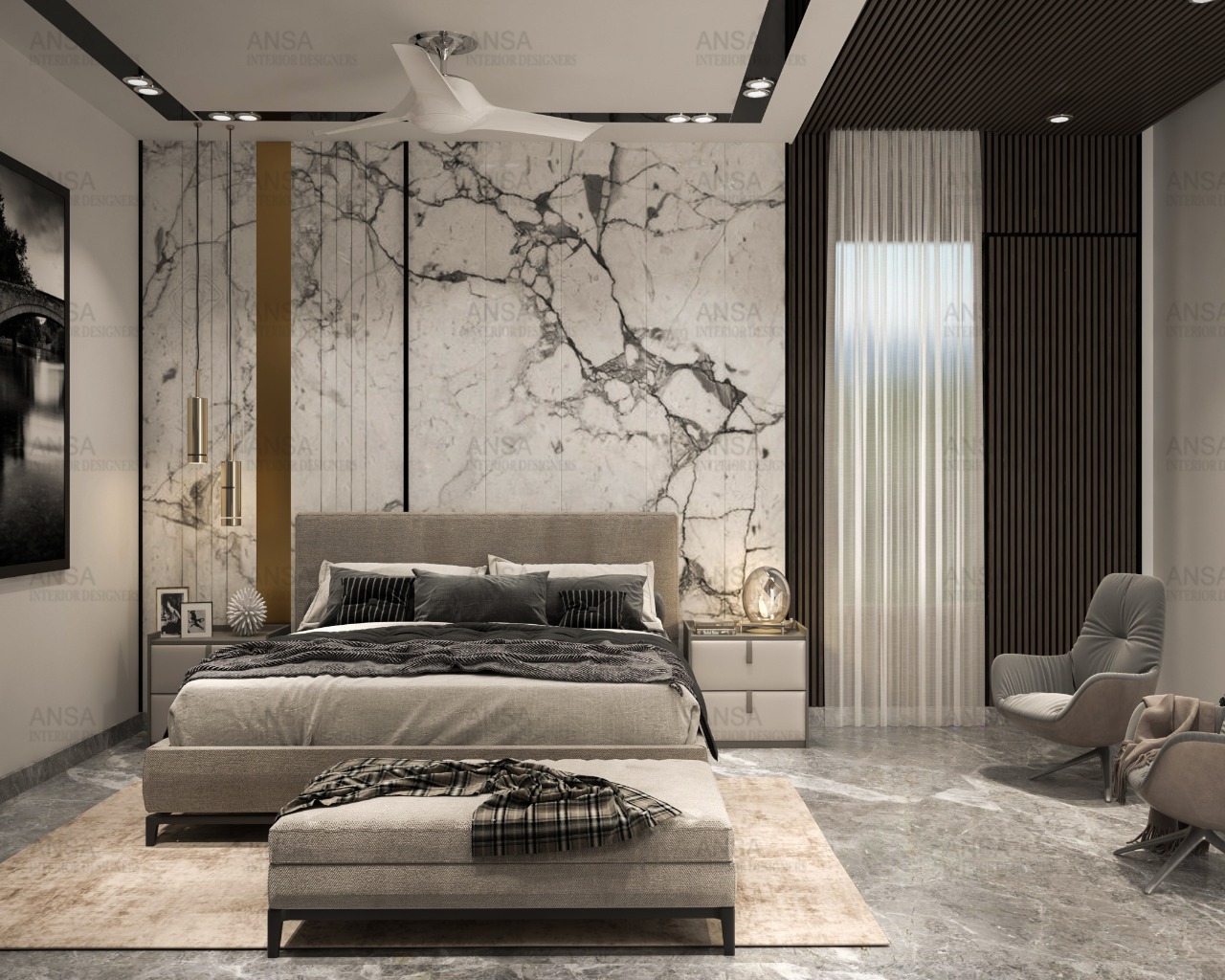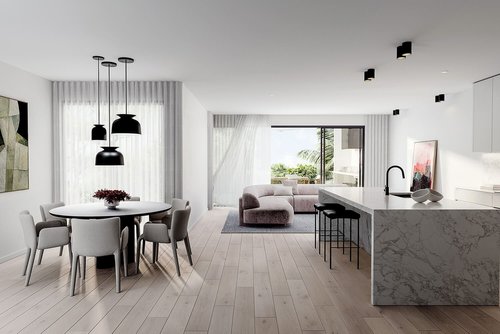Why Recognizing the Principles of Inside Design Is Crucial for Effective Area Preparation
Understanding the principles of interior design is basic to reliable room preparation, as it lays the foundation for producing atmospheres that balance performance with visual charm. Vital aspects such as circulation, proportion, and balance are not simply decorative considerations; they are crucial in maximizing exactly how an area is utilized.
Importance of Room Preparation
Space planning is a basic element of interior design that dramatically affects the functionality and visual appeals of a space. It involves the strategic setup of furnishings, fixtures, and building aspects to optimize the usage of offered space while boosting the general user experience. Reliable area planning addresses different elements, consisting of flow, accessibility, and the details requirements of the occupants.
One of the key advantages of area planning is its capability to boost spatial effectiveness. Interior design studio Miami. By thoughtfully organizing a design, designers can ensure that every location serves an objective, minimizing clutter and promoting a feeling of order. In addition, appropriate room planning fosters an unified atmosphere, enabling seamless movement and communication within a room
Moreover, successful room planning thinks about all-natural light, sightlines, and the partnership between various areas. This all natural method not just elevates the aesthetic appeal yet likewise adds to the health and productivity of the passengers. Inevitably, a well-executed space plan contributes in developing a well balanced and inviting atmosphere, making it necessary for any kind of interior decoration project.
Secret Concepts of Inside Layout

One basic principle is equilibrium, which can be symmetrical, unbalanced, or radial. Symmetrical balance produces a feeling of order, while unbalanced equilibrium offers an extra dynamic aesthetic appeal. Another important concept is percentage and range, ensuring that the size of furniture and decoration components connect sympathetically per various other and the total room.
Shade concept also plays a considerable function, impacting state of mind and understanding. Developers use shade combinations to stimulate certain sensations and improve the spatial experience. Furthermore, the concept of rhythm includes producing a sense of movement through repetition of patterns, shapes, or colors, guiding the eye throughout the room.
Last but not least, the concept of focus guides attention to prime focus, permitting a clear story within the layout. Luxury Interior designer Miami. By adhering to these key concepts, indoor developers can create atmospheres that not just satisfy useful demands however also reverberate with the passengers on a psychological degree
Influence On Functionality and Circulation

The setup of furnishings, the option of materials, and the integration of technology all play important functions in achieving optimal functionality. Positioning seating locations in closeness to workspaces can promote communication and collaboration, therefore improving efficiency. In addition, ensuring that paths are unhampered and clear enables effective activity, minimizing congestion and promoting an all-natural flow throughout the area.
Moreover, incorporating components such as lights and color can even more assist in delineating locations, making it easier for people to browse their atmosphere. Thoughtful room planning thinks about not just the physical elements of layout but likewise just how users engage with their surroundings. Inevitably, a concentrate on capability and flow not only boosts the user experience yet likewise elevates the general performance of the space, producing a setting that satisfies the demands of its occupants while promoting a feeling of consistency and balance.
Enhancing Visual Appeals and State Of Mind
Three crucial components-- lighting, texture, and color-- play crucial duties in enhancing the visual appeals and mood of an interior space. Shade develops the emotional tone; warm shades like reds and oranges evoke energy and warmth, while cooler shades such as blues and greens promote calmness and serenity. Choosing a harmonious color palette can transform a space, creating a natural and aesthetically enticing atmosphere.
Structure adds depth and interest, adding to the tactile experience within an area. A mix of appearances-- smooth surface areas, luxurious materials, and natural materials-- can develop aesthetic intrigue and improve comfort. For example, pairing a soft velvet couch with a streamlined glass coffee table can produce a balanced aesthetic that welcomes communication.
Lighting, often a forgotten element, significantly impacts state of mind. Natural light fosters an open, ventilated atmosphere, while purposefully placed fabricated lighting can develop warmth and emphasize building functions. Dimmer buttons make it possible for flexibility, allowing for modifications to suit different tasks or times of day.
Including these 3 aspects thoughtfully not just raises the visual allure of an area however also cultivates an ambience that reverberates with its intended function, inevitably enhancing the overall experience for its occupants.
Practical Applications in The Real World
Applying interior decoration principles in reality needs a thoughtful approach that incorporates shade, texture, and additional hints lighting right into day-to-day spaces. By recognizing exactly how these elements function together, people can create settings that are look at this now not just visually enticing however unified and also practical.
For circumstances, in a small living area, employing a light color combination can make the space really feel bigger and a lot more open. Strategic use mirrors can improve natural light and develop an illusion of depth. Incorporating different structures with textiles, such as pillows and rugs, can add warmth and interest without overwhelming the senses.
Lighting plays an important function in defining the atmosphere. Layered lights, including ambient, job, and accent choices, permits flexibility in mood setups. In an office, for instance, a combination of all-natural light, workdesk lights, and decorative fixtures can boost performance while keeping a welcoming ambiance.
In addition, understanding spatial connections and furniture plan can bring about improved functionality. By adhering to principles such as balance and percentage, one can make sure that areas serve their intended objective while staying visually pleasing. On the whole, sensible applications of interior decoration principles considerably boost the livability and charm of any setting.
Final Thought
In conclusion, recognizing the principles of interior decoration is crucial for efficient space planning, as it fosters a balance read this article between capability and visual appeals. By applying key concepts such as percentage, color concept, and flow, developers can create environments that boost both functionality and aesthetic appeal. Inevitably, this knowledge adds to the development of areas that not just meet functional demands however additionally elevate the general environment, resulting in more enjoyable and reliable experiences for customers.
Understanding the concepts of indoor design is essential to efficient room planning, as it lays the groundwork for developing settings that harmonize performance with visual allure.Space planning is an essential element of indoor layout that significantly influences the performance and appearances of a space. Additionally, appropriate area preparation cultivates an unified environment, allowing for seamless motion and communication within a room.
In addition, the concept of rhythm involves producing a sense of motion with repeating of forms, patterns, or colors, leading the eye throughout the room.
In verdict, understanding the principles of interior design is important for efficient area planning, as it fosters a balance in between capability and aesthetics.